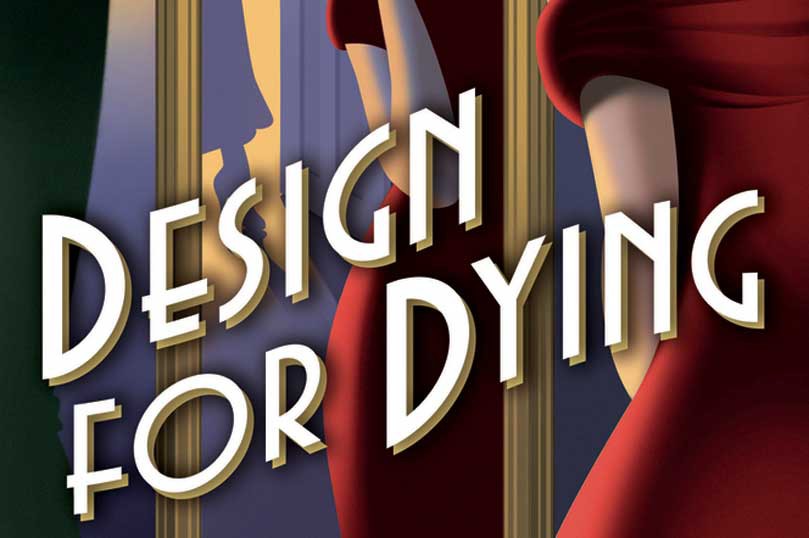In our novel Design for Dying, Lillian Frost, a New Yorker transplanted to Hollywood, teams up with costume designer Edith Head in 1937 to solve the murder of an up-and-coming starlet. Lillian is a character of our own creation, but fans of classic Hollywood will surely recognize the name Edith Head.
Edith (we hope she’d forgive the informality) remains a legend to this day. Nominated for 35 Academy Awards during her career she took home eight statuettes, more than any other woman. Over an almost 60-year career she designed costumes for films as varied as Double Indemnity, Sabrina, To Catch a Thief and Vertigo. Stars like Marlene Dietrich, Barbara Stanwyck, Audrey Hepburn and Grace Kelly wore her creations on screen and off. Her public persona remains iconic; the large glasses, brunette bangs and stern expression were an inspiration for Edna Mode in the 2004 Pixar film The Incredibles.
“Nothing is deader than last year’s high style.” – Edith Head
In researching late 1930’s movie production we read histories of costume design, swooning over coffee table books showcasing page after page of glamorous gowns. We watched movies from the era wondering how secretaries and nurses could afford satin lingerie and mink wraps. (Answer: realism was not a goal for movie studios appealing to Depression-era audiences.) We learned everything we could about how a costume designer in 1937 would approach her work.
The real Edith Head was more difficult to get a bead on. Biographies of the designer contradict each other. Turning to Edith’s own accounts of her life didn’t clarify matters; in her books The Dress Doctor (1959) and How To Dress For Success (1967) she embellished the story of her life. More fascinatingly, she also provided fashion advice for the average woman.
“Divorce yourself from styles that do not suit you, even though your soul yearns for them.” – Edith Head
Some of her counsel reads like the artifacts of a bygone era. An appendix in The Dress Doctor includes suggestions on what the busy woman should wear for her various activities, like attending dog races (sport dress, hat optional), skeet shooting (frontier trousers, visored cap) and grocery shopping (“Many women wear pants for marketing, even in cities — very few should.”).
At other times her guidance has the no-punches-pulled common sense we tried to bring to our fictionalized Edith. Who could argue with maxims like: “It isn’t those who spend the most money who are the most smartly dressed.”? And surely there are people today who would benefit from her counsel to the aspiring executive: “On the way up … distinction without flamboyance should be your credo.”
Edith’s philosophy of costume design was straightforward. “The story is your Bible,” she wrote in The Dress Doctor. “First and above all, what kind of character are we dressing?” The book sparkles with stories of a perfectionist Marlene Dietrich spending days working with Edith to create the wardrobe for Witness for the Prosecution, consummate actress Bette Davis throwing herself on the fitting room couch to ensure each dress for All About Eve would stand up to the action and Gloria Swanson delivering homemade whole wheat bread to the studio while Edith labored over the costumes for Sunset Blvd.
Stories like these brought Hollywood’s golden age to life and ignited our imaginations. As far as we know, the real Edith Head didn’t solve any murders, but with such a clear-eyed view of human nature she’d have made a terrific detective.
Buy Design for Dying today:
Amazon | Barnes & Noble | Books-a-Million | iBooks | Indiebound | Powell’s
Find out more about Renee Patrick on Twitter at @RPatrickBooks and on her website.







